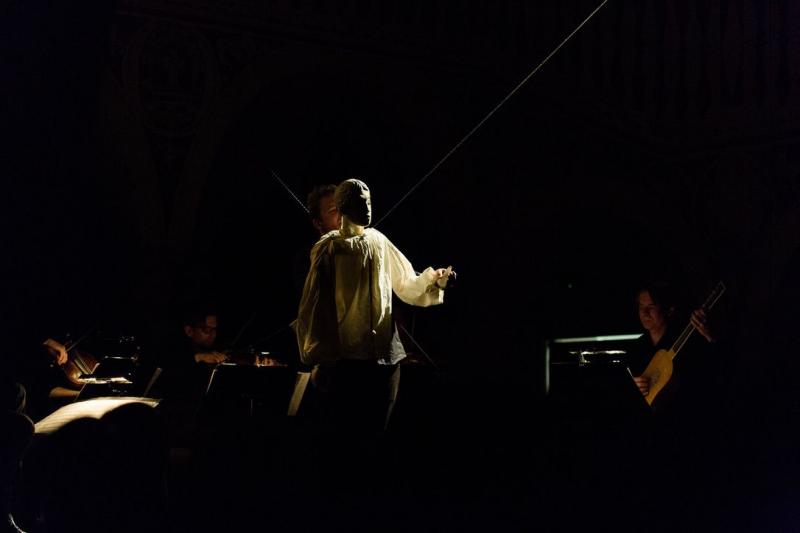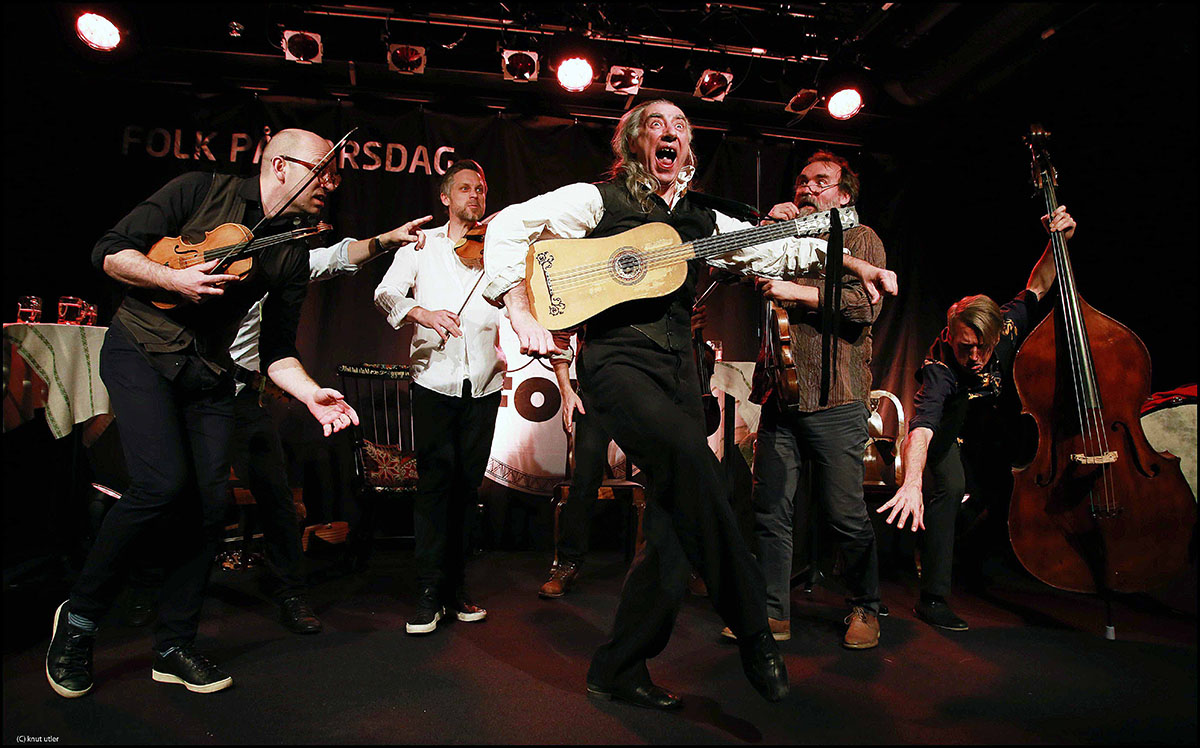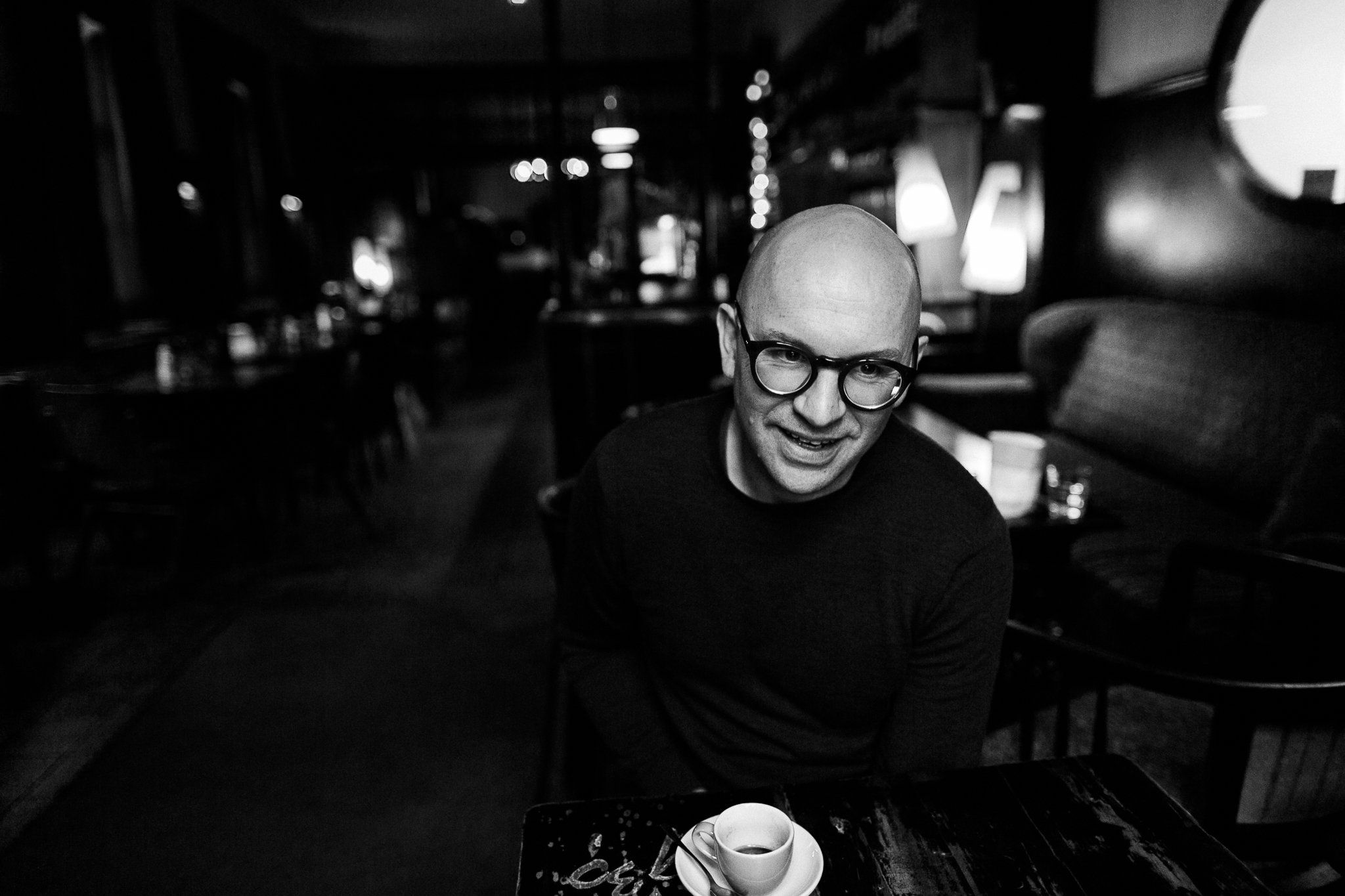Die schöne Müllerin and The Alehouse Sessions, Middle Temple Hall review - overflowing musical energy and joy | reviews, news & interviews
Die schöne Müllerin and The Alehouse Sessions, Middle Temple Hall review - overflowing musical energy and joy
Die schöne Müllerin and The Alehouse Sessions, Middle Temple Hall review - overflowing musical energy and joy
Bjarte Eike and his musicians turn 21st-century concert hall into 17th-century tavern

The world of the 17th-century tavern is a long way from the contemporary concert hall. A quick glance at the scene in paintings by Jan Steen or his contemporaries shows us a joyful tangle of men and women, dogs, cats and small children, all engaged in a riot of drinking, dancing, brawling, music-making and love-making (occasionally even napping) while hens stroll officiously across the floor pecking up crumbs. It looks noisy, dirty and a jolly good time.
There were no dogs or hens (or napping, that I could see) at Bjarte Eike’s latest Alehouse Session at the handsome Middle Temple Hall. But, as Charles I looked disapprovingly down at us from his panelled wall, there was something even more alien: that sense of spontaneous, unbuttoned, conversational music-making that we lost somewhere along the line when concert-goers morphed from individual listeners and companions to a passive, paying audience sat in silent rows.
Norwegian violinist Bjarte Eike’s project is a moveable feast. You never know what you’re going to get, and often there’s no set-list to help. So you surrender and let the group take you where they will. Songs are passed around and shared like bar-snacks; tunes by Purcell and Playford jostle with folksongs and dances, and while the setting is Cromwell’s England, where the closure of the playhouses has driven all the musicians into the alehouse, the repertoire roams freely across Europe and often beyond. The Alehouse Boys (the after-hours alter-ego of Eike’s Barokksolistene) have expanded in number since their last visit to London. The addition of Hans Knut Sveen’s Indian harmonium (imagine an accordion disguised as a sewing machine), Judith-Maria Blomsterberg’s cello and – most strikingly – Slovak violinist and singer Milos Valent, changes the flavour of the band, giving us welcome new rasp as well as richness.
The Alehouse Boys (the after-hours alter-ego of Eike’s Barokksolistene) have expanded in number since their last visit to London. The addition of Hans Knut Sveen’s Indian harmonium (imagine an accordion disguised as a sewing machine), Judith-Maria Blomsterberg’s cello and – most strikingly – Slovak violinist and singer Milos Valent, changes the flavour of the band, giving us welcome new rasp as well as richness.
At the centre, though, is the charismatic Eike, whose fiddle can turn on a dime. One moment we’re craning forwards to hear the lightest whisper of a lullaby, the next we’re pinned back by a flurry of riotous semiquavers and riotous, stamping dance. Like jazz, the music passes between players, each stepping out of the texture in turn.
The Spanish Set (“It’s called the Spanish Set because it contains three English dances," Eike quipped) gave us a swaggering extended solo from guitarist Fredrik Bock, while violist Per Buhre stopped clocks and hearts for a moment with the simplicity of his “My Love is Like a Red Red Rose”. A riotous rendition of “The Raggle Taggle Gypsies” (complete with guitar-horse and Monty Python-style galloping) saw soprano Mary Bevan plucked from the audience for a gorgeous cameo, while Valent’s two songs found an astringent beauty and heightened drama we can lose in the studied, off-the-cuff ease of these performances.
But before we could kick off our shoes at the tavern, the group offered us a first-half lay-over in the 19th century with Schubert’s Die schöne Müllerin. But rather than cage a story noisy with brooks and mill-wheels, bright with flowers and woods in the salon, this account (complete with tree, branches stretched out over the performers) seemed made for village green. Baritone Thomas Guthrie (pictured above) – a longstanding member of Eike’s group – was soloist, director and arranger of a dramatised version of the cycle that not only framed it with spoken Prologue, Epilogue and interjections (whose winsome rhyming couplets quickly palled) but also staged it complete with two actors (Sean Garrett and Rhiannon Harper Rafferty) and a puppet Miller-Boy.
Baritone Thomas Guthrie (pictured above) – a longstanding member of Eike’s group – was soloist, director and arranger of a dramatised version of the cycle that not only framed it with spoken Prologue, Epilogue and interjections (whose winsome rhyming couplets quickly palled) but also staged it complete with two actors (Sean Garrett and Rhiannon Harper Rafferty) and a puppet Miller-Boy.
There’s a lot going on in Guthrie’s account. Do we really need all the elements? It does feel like diminishing returns, overloading these slight songs with too much stage fuss and faff while neglecting some of the care that, in a traditional performance, can conjure worlds from a tiny inflection of vocal tone or articulation. But the arrangement for Eike and the Barokksolistene is superb – a fusion of folk, soundtrack and even jazz that finds unexpected new accents and colours in the familiar cycle.
A good group makes it fun for the audience, but a really great one manages to have fun themselves while doing it. I can’t think of players I’ve seen recently enjoying their job more obviously or generously than this. One concert, taken twice a month, could see us all through a long winter.
rating
Explore topics
Share this article
The future of Arts Journalism
You can stop theartsdesk.com closing!
We urgently need financing to survive. Our fundraising drive has thus far raised £49,000 but we need to reach £100,000 or we will be forced to close. Please contribute here: https://gofund.me/c3f6033d
And if you can forward this information to anyone who might assist, we’d be grateful.

Subscribe to theartsdesk.com
Thank you for continuing to read our work on theartsdesk.com. For unlimited access to every article in its entirety, including our archive of more than 15,000 pieces, we're asking for £5 per month or £40 per year. We feel it's a very good deal, and hope you do too.
To take a subscription now simply click here.
And if you're looking for that extra gift for a friend or family member, why not treat them to a theartsdesk.com gift subscription?
more Classical music
 Scott, Irish Baroque Orchestra, Whelan, RIAM, Dublin review - towards a Mozart masterpiece
Characteristic joy and enlightenment from this team, but a valveless horn brings problems
Scott, Irish Baroque Orchestra, Whelan, RIAM, Dublin review - towards a Mozart masterpiece
Characteristic joy and enlightenment from this team, but a valveless horn brings problems
 Classical CDs: Voice flutes, flugelhorns and froth
Baroque sonatas, English orchestral music and an emotionally-charged vocal recital
Classical CDs: Voice flutes, flugelhorns and froth
Baroque sonatas, English orchestral music and an emotionally-charged vocal recital
 Kanneh-Mason, Britten Sinfonia, Shave, Milton Court - a grin and a big beaming smile
A pair of striking contemporary pieces alongside two old favourites
Kanneh-Mason, Britten Sinfonia, Shave, Milton Court - a grin and a big beaming smile
A pair of striking contemporary pieces alongside two old favourites
 theartsdesk at the New Ross Piano Festival - Finghin Collins’ musical rainbow
From revelatory Bach played with astounding maturity by a 22 year old to four-hand jazz
theartsdesk at the New Ross Piano Festival - Finghin Collins’ musical rainbow
From revelatory Bach played with astounding maturity by a 22 year old to four-hand jazz
 First Person: Manchester Camerata's Head of Artistic Planning Clara Marshall Cawley on questioning the status quo
Five days of free events with all sorts of audiences around Manchester starts tomorrow
First Person: Manchester Camerata's Head of Artistic Planning Clara Marshall Cawley on questioning the status quo
Five days of free events with all sorts of audiences around Manchester starts tomorrow
 Goldscheider, Brother Tree Sound, Kings Place review - music of hope from a young composer
Unusual combination of horn, strings and electronics makes for some intriguing listening
Goldscheider, Brother Tree Sound, Kings Place review - music of hope from a young composer
Unusual combination of horn, strings and electronics makes for some intriguing listening
 theartsdesk Q&A: composer Donghoon Shin on his new concerto for pianist Seong-Jin Cho
Classical music makes its debut at London's K-Music Festival
theartsdesk Q&A: composer Donghoon Shin on his new concerto for pianist Seong-Jin Cho
Classical music makes its debut at London's K-Music Festival
 Helleur-Simcock, Hallé, Wong, Bridgewater Hall, Manchester review - moving lyricism in Elgar’s concerto
Season opener brings lyrical beauty, crisp confidence and a proper Romantic wallow
Helleur-Simcock, Hallé, Wong, Bridgewater Hall, Manchester review - moving lyricism in Elgar’s concerto
Season opener brings lyrical beauty, crisp confidence and a proper Romantic wallow
 Kohout, Spence, Braun, Manchester Camerata, Huth, RNCM, Manchester review - joy, insight, imagination and unanimity
Celebration of the past with stars of the future at the Royal Northern College
Kohout, Spence, Braun, Manchester Camerata, Huth, RNCM, Manchester review - joy, insight, imagination and unanimity
Celebration of the past with stars of the future at the Royal Northern College
 Jansen, LSO, Pappano, Barbican review - profound and bracing emotional workouts
Great soloist, conductor and orchestra take Britten and Shostakovich to the edge
Jansen, LSO, Pappano, Barbican review - profound and bracing emotional workouts
Great soloist, conductor and orchestra take Britten and Shostakovich to the edge

Add comment